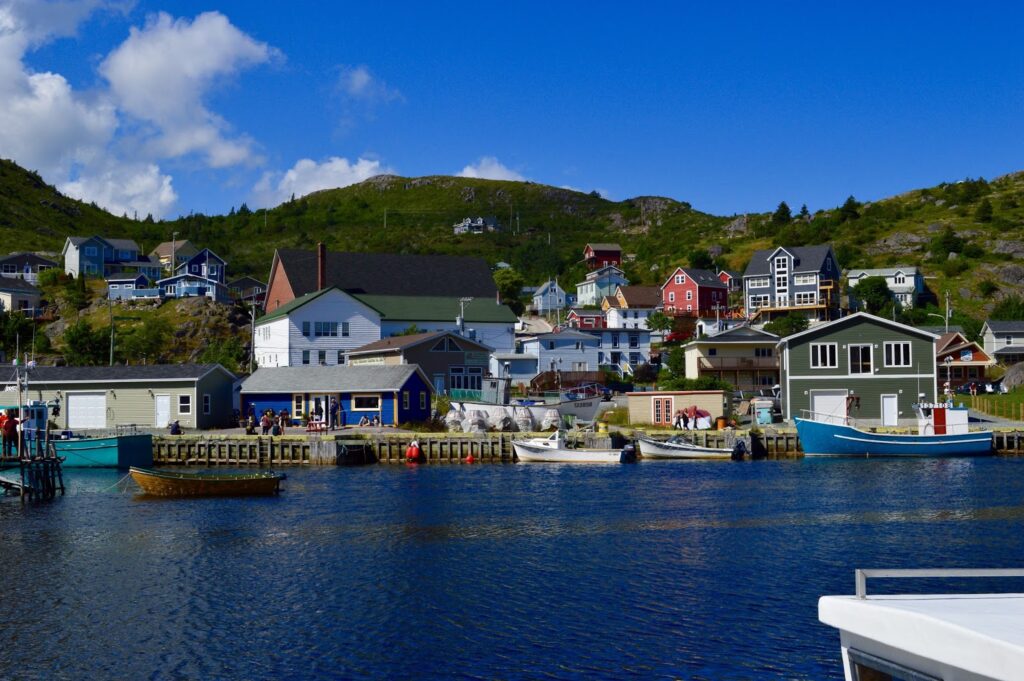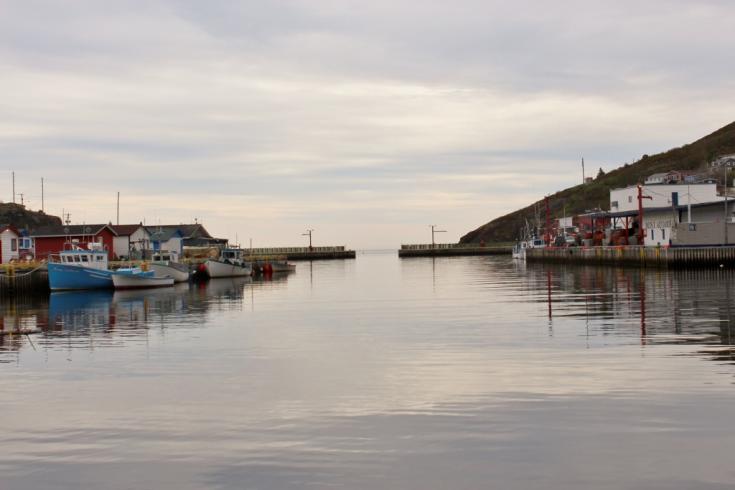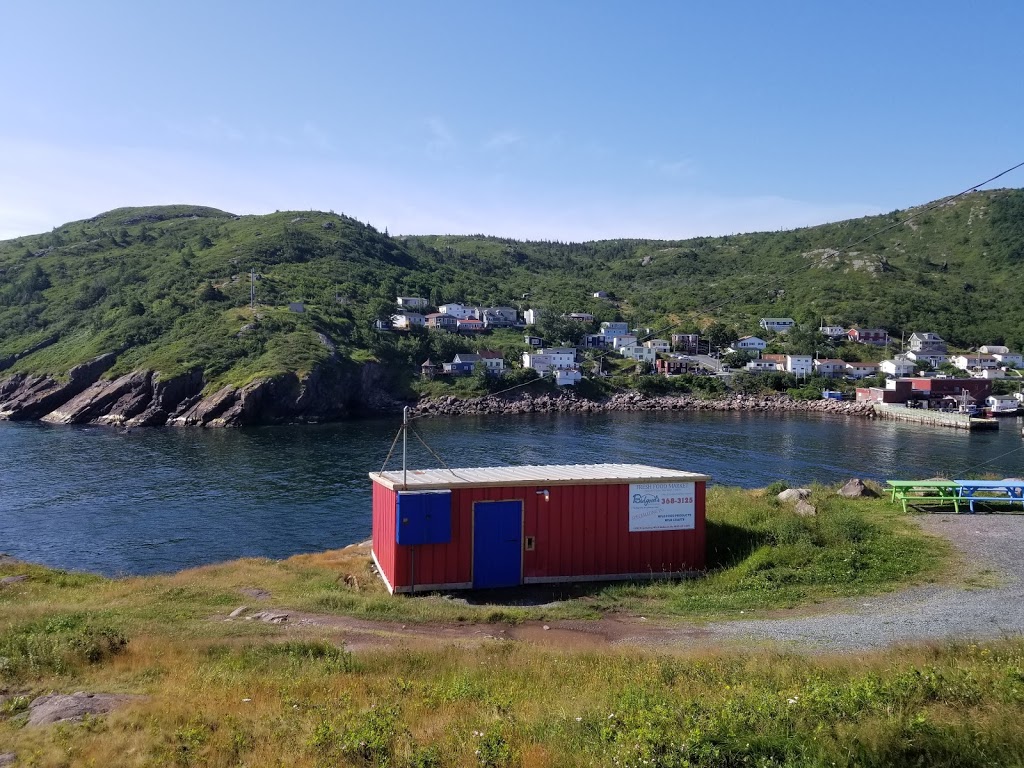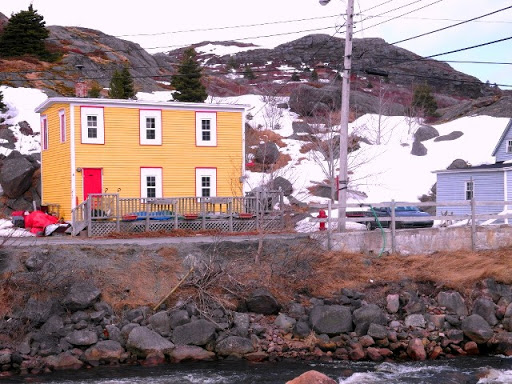Petty Harbour–Maddox Cove is a town of approximately 960 people located on the eastern shore of the Avalon Peninsula in the province of Newfoundland and Labrador, Canada. Take a look below for 25 interesting and amazing facts about Petty Harbour-Maddox Cove, Newfoundland and Labrador, Canada.
1. It is nestled deep in the heart of Motion Bay, just south (approximately 15 minutes away) of St. John’s.
2. The present town is approximately 200 years old, though the site has been continuously occupied since at least 1598, predating the arrival of the Mayflower and making it one of the oldest European settlements in North America.
3. During King William’s War, the village was raided by French forces in the Avalon Peninsula Campaign.
4. Petty Harbour–Maddox Cove is the site of the Petty Harbour Generating Station, the first hydroelectric generating station in Newfoundland and Labrador.
5. It was also the Tidy Towns population category winner for 2007.

6. This award is based on natural beauty, community involvement, environmental awareness and Heritage preservation.
7. The name “Petty Harbour” is the anglicized form of the French name “Petite Havre” meaning Small Harbour.
8. By 1500 “Pettite Harbour” was probably already a regular seasonal base for the Basque fishery, and by the 1600s the English had taken it over.
9. Richard Whitbourne records a decisive “set-to” between English, who were probably royally licensed privateers, and Portuguese at “Petyte Harbour” in 1619. An excellent base for pirates, Petty Harbour afforded a good hiding place for their small ships, intent on attacking vessels approaching St. John’s (as late as 1791 two Yankee privateers were captured there).
10. In 1621 control of Petty Harbour was shared by William Vaughan, George Calvert, and the London and Bristol Company, although none of these absentee owners attempted settlement or regulation of the fishery. In 1637 David Kirke’s settlement brought by-boat keepers (landowners who hired fishing servants) to Petty Harbour, and this practice continued after the settlement attempt failed.

11. The anglicized spelling of the place name was soon established – in his 1604 Journal, James Yonge records a journey overland from St John’s to “Petty Harbour” to “look after our men”. From this period until the nineteenth century, the economy of the area was dominated by “Newman and Company”, a West Country firm, which owned and rented out most of the land and controlled trade.
12. From 1664 to 1850 the Newman and company, and English West Country owns most of the lands and controls the trade in the fishery.
13. Though the migratory fishing interests discouraged settlement, “Berry’s List” of 1675 records 5 planters 3 wives, 1 child, 39 servants, 10 boats, 4 stages, 3 vats and 6 cattle.
14. Early settlement was, however, subject to difficulty and danger. From 1676 to 1678 migrant fishermen seasonally razed settlers’ houses and premises. The presence of this settled fishery so close to St. John’s was a red flag to migratory fishermen anxious to protect their privilege of “freedom of fishing” and in 1676 and 1678 rooms at Petty Harbour were destroyed by crews of fishing ships.
15. In 1696 Petty Harbour was attacked and destroyed by the French. Lemoyne D’Iberville met his first resistance from 30 fishermen from Petty Harbour, who retreated behind the Petty Harbour River to a trench they had constructed. The fishermen were quickly overwhelmed by the soldiers, but managed to inform St. John’s of the invasion.

16. Two days later a force of 80 men sent out from the capital were also handily defeated by the French. Some 36 fishermen were killed in the battle and others were taken prisoner. When the French confronted the small winter garrison at St. John’s, they scalped one prisoner, William Drew, to strike terror into the hearts of the St. John’s men and the capital surrendered.
17. Daniel d’Auger de Subercase assembled a group of raiders composed of Mi’Kmaq and Canadians from Québec to help in the campaigns against British settlements. They captured Bay Bulls and Petty Harbour in January 1705 and then marched on St. John’s. In 1789 the brig Duke of Leinster arrived in the night leaving 12 women and 102 boys in Bay Bulls and Petty Harbour. These were Irish convicts whose original destination was Australia, but with high shipping costs, Newfoundland was deemed a more economical place.
18. Increases in crime and typhus in St. John’s lead to the deportation of the convicts back to Dublin three months later. In August 1796 a French squadron under Admiral de Richery threatened St. John’s and destroyed the settlement of Petty Harbour and Bay Bulls, seriously disrupting the bank fishery.
19. Nevertheless, settlement gradually increased. As the by-boat keepers, who settled the southside due to its favorable winds for drying fish, were mostly English and Protestant, and the Irish, who were forced to settle the north side, were chiefly Roman Catholic, the community was accidentally segregated on sectarian lines from an early time. The 1794-95 census records a population of 255 in 50 households, with 16 “heads of households” Newfoundland-born. There were 133 Protestants and 122 Catholics.
20. Prominent surnames included Angel, Chafe, French, Kennedy, Matthews and Welsh. Most people were occupied in the fishery, and there were two carpenters, two coopers, two laundresses and a surgeon. A Church of England church as built about 1800, and a Roman Catholic church in 1832. By 1857 Petty Harbour’s population had risen to 747 (29 of whom were born in Ireland and 22 in England), nearly twice as many Catholics as Protestants. There were two churches, over 100 dwellings, two schools with some 105 pupils, premises for salting fish and three cod oil factories. Education was in the charge of the interdenominational Newfoundland School Society. In addition to the three R’s, sewing and knitting were offered for girls and net-making for boys.

21. One of Newfoundland’s best known folk songs – the Petty Harbour Bait Skiff was written about Petty Harbour men who drowned in June 1852, while returning from Conception Bay with a load of bait. It was composed soon after the tragedy by John Grace of St. John’s, where there was “crying and lamenting in the streets” on learning of the fate of Skipper John French and his crew “all on the eighth of June”. Only one of the crew, “young Menshon”, was saved by “Jacob Chafe that hero brave.”
22. By the 1850s the population (747 inhabitants) had begun to exceed the capacity to support it: shore space and housing sites were taken up, and the wood supply was exhausted. Some residents moved inland to Doyles and the Goulds to supplement their earnings by logging and farming. When it became clear that the growing population could not be sustained even by these measures other people began to move, first to nearby Maddox Cove and then to the arable farmland of the Goulds. While the Goulds formed its own community, Maddox Cove continued its close connection with Petty Harbour.
23. With new room for expansion of the population of Petty Harbour (now usually counted to include Maddox Cove) continued to grow, reaching 1053 in 1891. This increase in population can be partly attributed to a new wave of Irish immigrants who settled in Maddox Cove. Prominent surnames in Maddox Cove included Chandler, Drake, Hanniford, Healey, Heffernan, Madden & O’Brien. At this time 60% of the residents were Roman Catholic, 30% Church of England and 10% Presbyterian; and 250 students attended four schools.
24. The turn of the century saw changes in the community’s economy and character. In 1898 the Reid Newfoundland Company built Petty Harbour Generating Station Newfoundland’s first hydro-electric generating station. It began operation on April 19th 1900, delivering power for St. John’s streetcar system and commercial lighting. This brought alternative employment to the area, as well as relatively cheap electricity, but controlling the water supply created practical difficulties and health problems. At this time, with the Goulds woodlands depleted, the sawmills at Petty Harbour closed.
25. The 1909 rail link between St. John’s and Trepassey increased contact with St. John’s, and the 1932 road made feasible daily commuting to the city for wage work – a practice that has grown in importance to the community. Petty Harbour-Maddox Cove were incorporated in 1969. In the late 1970s local improvement programs led to a revitalization of the local community by funding expansion and modernization of the fish plant and the installation of water and sewage facilities. A 77 lot subdivision was begun in Maddox Cove, most of the residents working in St- John’s. Both denominational schools in Petty Harbour closed in 1987, the students now attending school in the Goulds.




